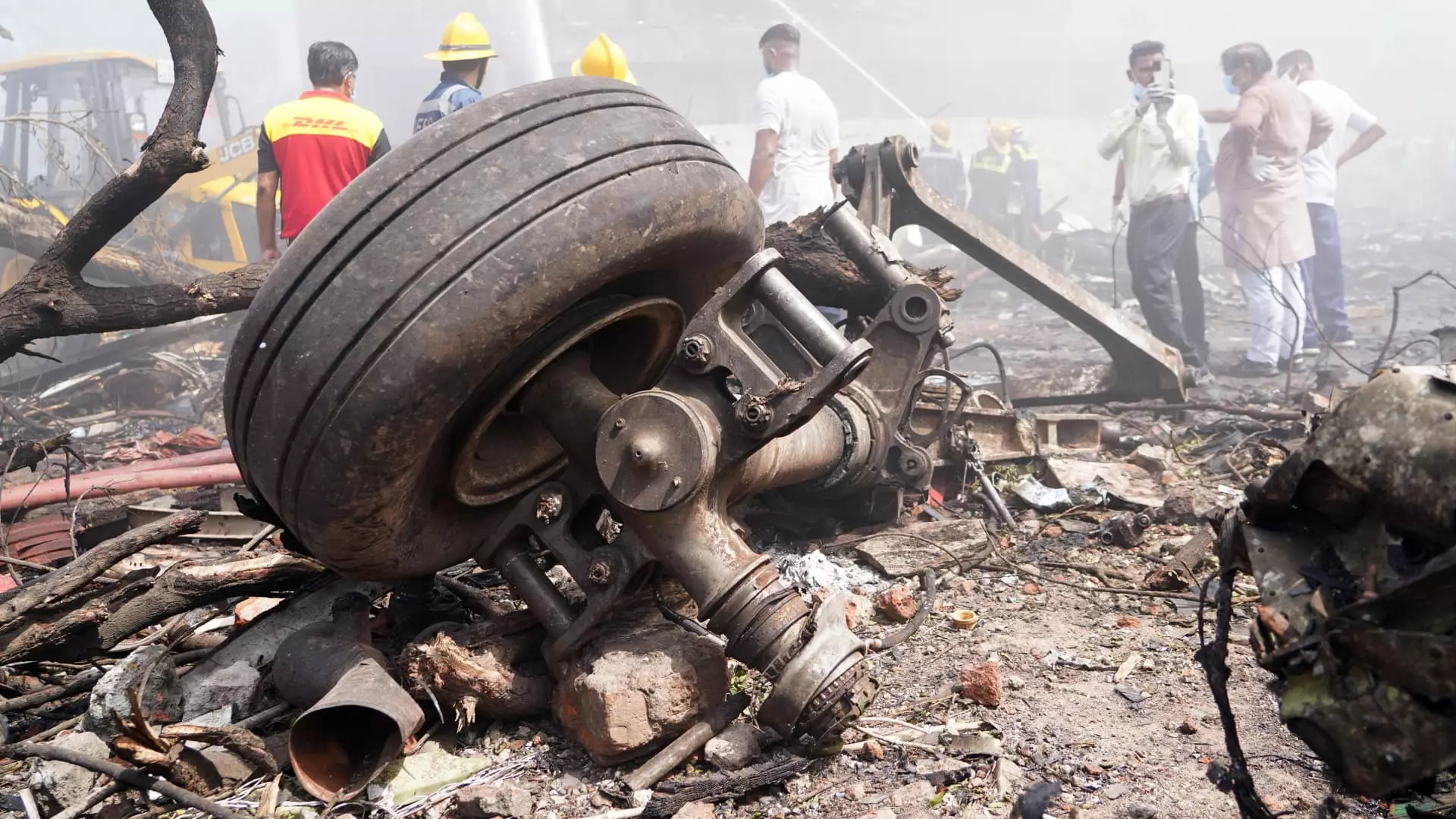The recent catastrophic crash of an Air India Boeing 787 Dreamliner shortly after takeoff from Ahmedabad has stunned the nation and reignited urgent concerns about the safety protocols surrounding modern aviation. This tragedy, which claimed the lives of 241 individuals, except for one survivor, marks not only the very first crash involving the Boeing 787 but also stands as one of the deadliest air disasters in recent history. The sheer scale of this incident compels us to examine the systemic failures that have allowed such a calamitous event to unfold.
The Context of a Familiar Airline
Air India has historically served as a staple in the Indian aviation sector, a sector that has been evolving rapidly with an increase in passengers and routes. The Boeing 787 was a vital component of Air India’s modernization efforts, joining a fleet that the airline has been ambitiously expanding, with plans to acquire more jets from industry rivals. However, the potential for disaster in this improvement scheme seems to eclipse the positive developments in fleet modernization.
The loss of the Dreamliner, a supposed pinnacle of engineering that has been operational since 2013, raises troubling questions about the adequacy of maintenance practices and risk assessment procedures in place. This aircraft type has been widely celebrated for its fuel efficiency and passenger comfort, yet here lies the stark reality—technology does not absolve human error, mismanagement, or potential acts of corporate negligence.
The Apparent Immediate Cause
According to preliminary reports, the plane lost altitude within a mere minute after takeoff, failing to climb beyond 625 feet before crashing violently into a residential area. What could precipitate such a rapid descent, especially for a craft that has been meticulously engineered for aviation safety? Various factors could contribute—from mechanical failures to human decision-making errors, or indeed a complex interplay of both.
Immediate retrospection should compel investigators to analyze not just the technical specifications of the aircraft, but also the operational protocols of Air India at the time of the flight. Did the crew receive adequate training? Were they sufficiently rested? Such probing inquiries will take precedence as investigators sift through critical flight data and cockpit recordings, known as the black boxes, to uncover the unsettling truth behind this tragedy.
The Implications of Past Negligence
Airline safety should be the non-negotiable priority, and yet we have seen a disconcerting trend where financial pressures and a competitive market often push safety concerns beneath the surface. Boeing itself has faced allegations in the past regarding lapses in safety standards and practices, including shortcuts that may have compromised the integrity of aircraft components. This pattern of negligence raises a glaring red flag—how can we trust aviation giants to prioritize passenger safety when profit motives often supersede ethical considerations?
Despite the company’s swift denial of these allegations, the shadow cast by past crises related to the 737 Max serves as a cautionary tale. The aviation industry, particularly the manufacturers and airlines, must engage in a rigorous reckoning regarding safety standards and practices, lest we witness more tragedies that could have been preventable.
The Broader Industry Perspective
Industry analysts point out that while a single incident might not precipitate immediate financial ruin for Boeing or Air India, the repercussions of such accidents are far-reaching. They can influence public perception and consumer confidence, which are vital for airline profitability. A report from Wolfe Research suggests that while demand for airplanes remains robust, such tragedies tend to sap momentum and can lead to an incremental decline in future orders if confidence isn’t restored.
Nevertheless, it is essential for the aviation community to rally behind a culture of accountability. Regulatory bodies must advocate for comprehensive reviews of safety practices, encompassing both current operational procedures and historical benchmarks. The bureaucratic tendency to promote progress without addressing the scarier realities of engineering flaws, human error, and corporate oversight can no longer be tolerated.
A Call for Reflection
As we wrestle with the ramifications of this heartbreaking event, one thing becomes abundantly clear: the aviation industry is at a crossroad. The reality of modern air travel should not be one of acceptable risk, marked by a hierarchy of profit over safety. It is time for a committed reassessment of the tenets that govern aviation. We owe it to those who lost their lives on that ill-fated flight, and indeed to all future passengers, to demand accountability, transparency, and, above all, unwavering dedication to the integrity of air travel. The cost of complacency must not only be acknowledged but actively countered with actionable reforms.

